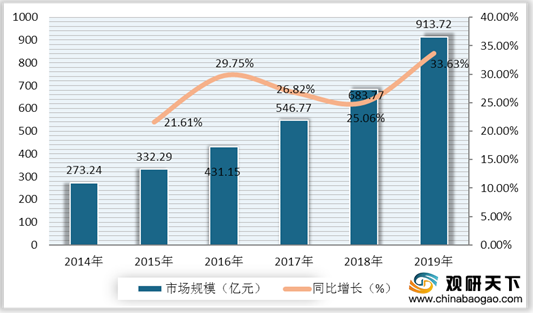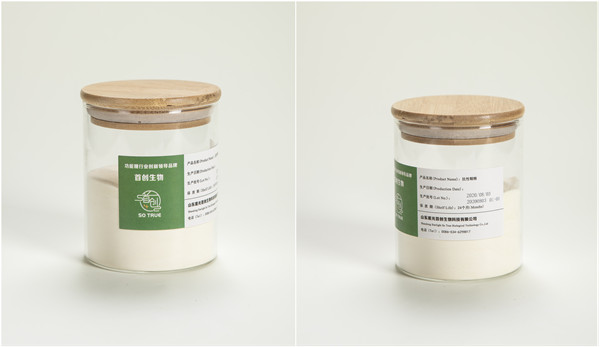How to choose Fantastic Meal Replacement?
| Starlight So True
When it comes to meal replacement, I believe you will not be unfamiliar. What exactly is a meal replacement? Meal replacement is the replacement of part or all of the meal, so in a broad sense, any food that can replace part or all of the meal can be called a meal replacement.
The concept of meal replacement originated in Western countries. Thanks to the development of Western industrialization, the food industry is also developing rapidly. Some of the earliest lipid-lowering and hypoglycemic foods, such as compressed biscuits, can be said to be the embryonic form of meal replacements. During this period, people have realized the importance of healthy diet and began to try to develop some low-fat, low-sugar foods to replace high-fat, high-calorie diets, and meal replacement products were born from this.
Gradually "expanded" meal replacement
The biggest advantage of meal replacement products is that they can quickly and conveniently provide the human body with a large amount of various nutrients, and have the characteristics of high fiber, low calories, and easy fullness. The reason why meal replacements are enthusiastically chosen by people is that they are not only small in size, but can also replace normal diets and have the effect of losing weight.
The Meal Replacement Food Group Standard (T/CNSS 002-2019) issued by the Chinese Nutrition Society states that: (part of) meal replacement foods are intended to meet the (part of) nutritional needs of one or two meals during the weight control period of adults, instead of one meal or Two meals (medium meal), a kind of energy-controlling food specially processed and formulated.
According to data, the production of meal replacement food in my country has increased year by year, from 351,400 tons in 2014 to 796,400 tons in 2018, with a compound annual growth rate of 22.7%; by 2019, the output of meal replacement food in my country reached 994,600 tons, year-on-year An increase of 24.89%. Since 2014, my country's meal replacement food market demand has also continued to grow. By 2018, my country's meal replacement food market demand reached 608,900 tons, a year-on-year increase of 19.82%; by 2019, China's meal replacement food demand has increased to 772,100 tons. A year-on-year increase of 26.8%.

Data source: Guanyan Tianxia
With the growth of production and demand, the market size of my country's meal replacement food industry has risen rapidly. By 2018, the market size has reached 68.377 billion yuan, an increase of 13.37 billion yuan from the previous year, a year-on-year increase of 25.06%; my country's meal replacement food industry market in 2019 The scale increased to 91.372 billion yuan, an increase of 22.995 billion yuan over the previous year and a year-on-year increase of 33.63%.

Data source: Guanyan Tianxia
According to Euromonitor International statistics, in 2017, the global meal replacement market reached 66.16 billion U.S. dollars, of which the United States reached 24.6 billion U.S. dollars, and the U.S. is expected to reach 30 billion U.S. dollars in 2022. In 2017, China reached 57.17 billion yuan, and it is expected to reach 120 billion yuan in 2022.
Fun dosage form, which one is the hot one?
The dazzling array of meal replacement product formulations on the market has also attracted consumers, including traditional meal replacement milkshakes, new trend meal replacement bars, energy bars, as well as various meal replacement beverages, meal replacement porridges, and meal replacement cereals. Meal replacement rice thin, meal replacement biscuits, meal replacement yogurt, etc.
From the perspective of market segment structure, among the market scale of my country's meal replacement food industry in 2019, the meal replacement porridge market has the largest scale, reaching 24.67 billion yuan, accounting for 27% of the overall market; followed by meal replacement milkshakes and meal replacements Oatmeal, the market size reached 21.929 billion yuan and 19.188 billion yuan, accounting for 24% and 21% respectively; followed by meal replacement bars, accounting for 9%.

Data source: Guanyan Tianxia
In terms of consumption amount, the highest proportion of people in my country with an annual consumption amount of meal replacement food above 3,000 yuan is meal replacement milkshakes, accounting for 38%; the annual consumption amount is between 0-1000 yuan and 1001-3000 yuan The meal replacement foods with the highest proportion of people are oatmeal, accounting for 29% and 33% respectively; the proportion of cereal energy bars and protein powder consumers is relatively low.

Data source: Guanyan Tianxia
The source of satiety-dietary fiber
Why does a small meal replacement make people feel hungry for a few hours? This is the credit of dietary fiber.
Resistant dextrin is a soluble dietary fiber, most of which is resistant to digestion in the small intestine, and is mainly fermented in the colon. 50% of this fiber will not be digested and absorbed by the human body, and is also called "indigestible dextrin". Dietary fiber is known as the seventh largest nutrient in the human body. It absorbs water and expands, making people feel full and helping to delay the recurrence of hunger, thereby achieving the effect of reducing food intake and partial meal replacement.
Function of resistant dextrin
Function 1: Lower blood sugar and regulate blood lipids
Resistant dextrin can not only form a gel to prevent the diffusion of sugars in the body, on the other hand, reduce the body's demand for insulin by reducing the sensitivity of peripheral nerve tissue to insulin, and ultimately inhibit the rise of blood sugar and insulin. Moreover, after the body continuously ingests resistant dextrin, the resistant dextrin can absorb bile acids, fats and other substances, so that the body's absorption rate of them decreases, thereby reducing the cholesterol content in the blood, aorta and other tissues, and achieving anti-fat Liver, lowering blood lipids, and improving lipid metabolism in patients with hyperlipidemia.
Function 2: Regulate the intestinal environment and promote defecation
The swelling of resistant dextrin can increase the volume of feces and increase the frequency of intestinal wall peristalsis, which is conducive to human defecation. This feature of dietary fiber can reduce the time that feces stay in the intestines and the chance of toxic and harmful substances in the feces coming into contact with the intestines, thus winning the reputation of "intestinal scavengers".
Function 3: Control weight and prevent obesity
Many studies have confirmed the positive relationship between high dietary fiber intake and human body weight. Studies have shown that in an observational study in 1994, it was found that the fiber intake of thin people was significantly higher than that of obese men and women. Appleby and other studies also found a similar phenomenon. The average body mass index (BMI) of the non-meat-eater group with higher dietary fiber intake in all age groups was lower than that of the meat-eater group.
The water-swelling property of resistant dextrin itself is an important factor that can affect body weight. After the resistant dextrin absorbs water and swells in the gastrointestinal tract, the volume and weight increase by 10-15 times. This feature enables foods containing resistant dextrins to increase people’s sense of fullness, thereby reducing the intake and absorption of fats, carbohydrates and other food components, and avoiding the control of the total energy intake of food to meet the needs of the human body. Common problems in modern diets such as overnutrition and excessive accumulation of fat. In a study by Guérin-Deremaux and others with overweight Chinese men as subjects, it was found that after 12 weeks of taking 34 g of resistant dextrin, the weight and body fat percentage of the subjects were significantly reduced.
Another reason is that high-fiber foods usually mean that these foods exhibit lower GI values after entering the body. At least 15 studies have shown low-GI foods (such as plantain, guar, oatmeal and beans) Both lead to increased satiety and decreased voluntary food intake. A low-GI diet can also reduce body fat content and induce weight loss more quickly, especially in women. Therefore, resistant dextrin has a certain effect on weight control and obesity reduction.
About us
Shandong Starlight So True Biological Technology Co., Ltd. (hereinafter referred to as "So True"), relying on the resource advantages of Shandong Starlight Group's sucrose and starch sugars, cooperates with many scientific research institutes at home and abroad to develop a number of prebiotics and dietary fiber series with independent intellectual property rights The products, among them, the pioneering resistant dextrin, with its excellent taste and stable quality, are popular among downstream consumers.


The picture of So True's resistant dextrin
Product advantages:
Advantage 1: Good liquidity
So True's resistant dextrin has good fluidity and is extremely convenient to use in the food industry such as product production and processing; it will not agglomerate or agglomerate during storage, transportation or vibration; when it is mixed with other powdery raw materials , There will be no segregation, stratification and other phenomena.
Advantage 2: High dietary fiber content
So True's dietary fiber content of the original resistant dextrin reaches more than 95%. Fermentation under the action of intestinal bacteria can produce more short-chain fatty acids, which can better promote probiotics to exert a wide range of health effects. In addition, high dietary fiber content is good for maintaining intestinal health, regulating blood sugar, preventing type 2 diabetes and weight regulation.
Due to the high dietary fiber content, its water absorption is superior, it can soften feces, promote intestinal peristalsis, effectively prevent constipation, accelerate defecation, and have a certain relief effect on diarrhea.
Reminder: Meal replacement foods cannot completely replace the normal diet. While trying meal replacement products, don't ignore the intake of other nutrients.
References: Huang Zheng, Sun Jiangwen, Xu Yong, et al. Research and application progress of resistant dextrin[J]. Journal of Hainan Normal University (Natural Science Edition), 2018,31(04):418-427.

 Follow the wechat of So True
Follow the wechat of So True
